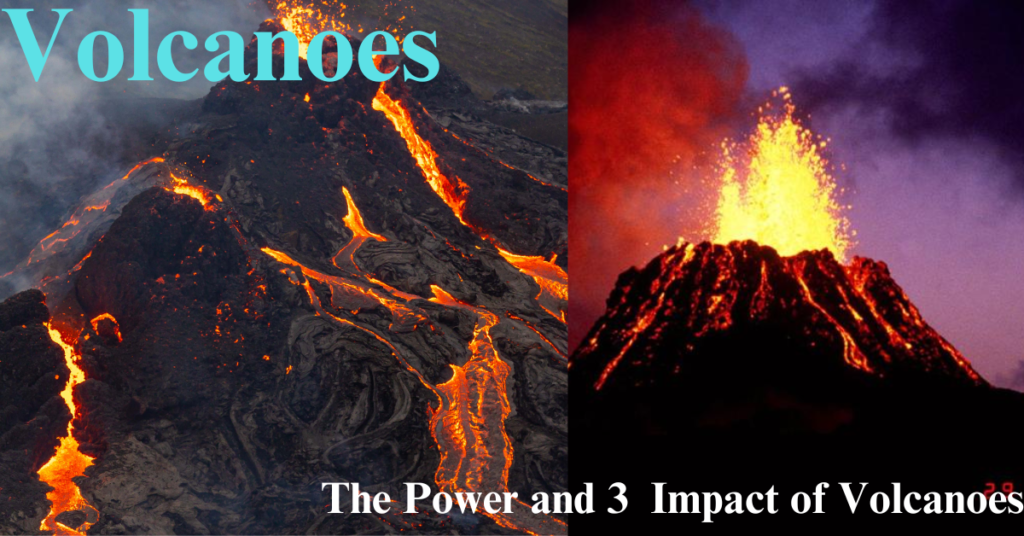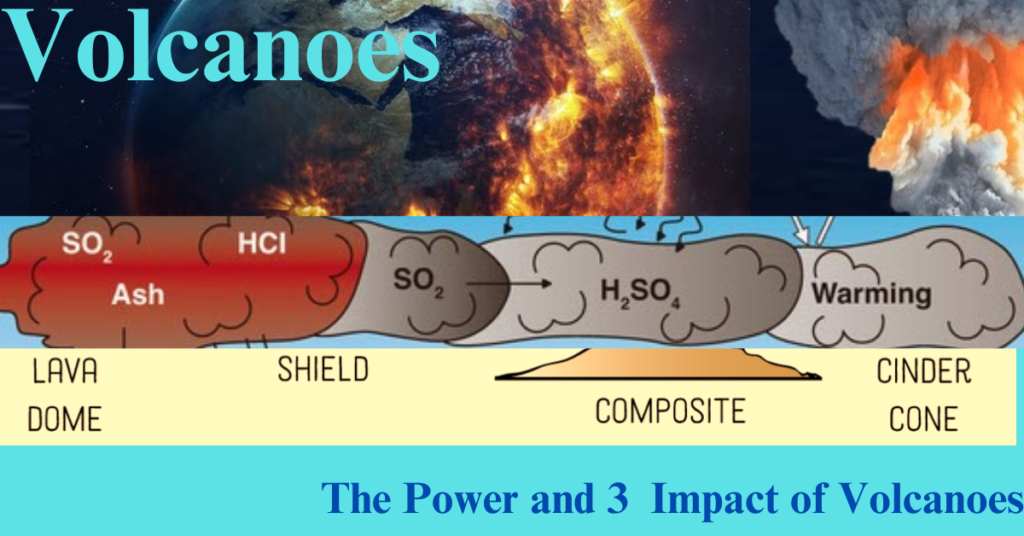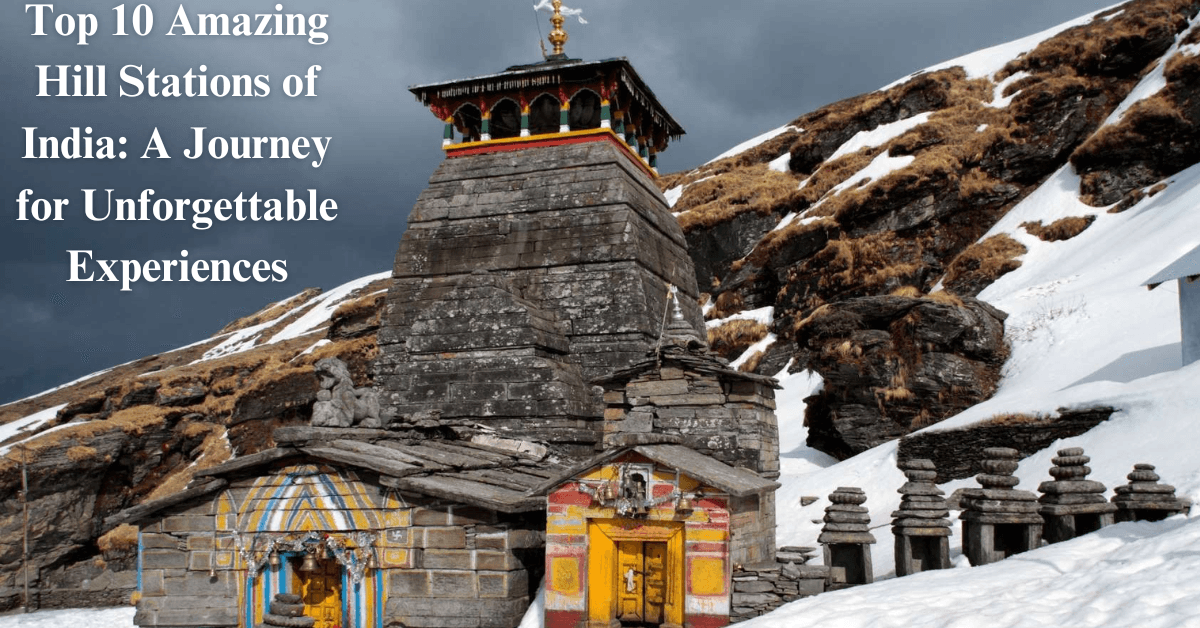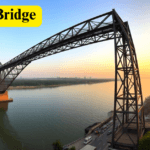The Power and 3 Impact of Volcanoes
The Power and 3 Impact of Volcanoes . A volcano is a rupture in the Earth’s crust where molten lava, ash, and gases from below the surface are expelled, often forming a mountain or hill.

Table of Contents
Volcanoes are some of the most formidable and fascinating natural phenomena on Earth. These geological formations have the power to shape landscapes, influence climate, and even impact human civilizations. Understanding the power and impact of volcanoes is crucial for appreciating their role in Earth’s dynamic system and for preparing for the potential hazards they pose.
Understanding Volcanoes
A volcano is a rupture in the Earth’s crust where molten lava, ash, and gases from below the surface escape into the atmosphere. The term “volcano” originates from Vulcano, a volcanic island in Italy named after Vulcan, the Roman god of fire. Volcanoes can be found all over the world, often along tectonic plate boundaries.
Types of Volcanoes

Volcanoes come in various shapes and sizes, each with unique characteristics:
- Shield Volcanoes: These have broad, gentle slopes built by the eruption of low-viscosity lava that can travel long distances. Mauna Loa in Hawaii is a prime example of a shield volcano.
- Stratovolcanoes: Also known as composite volcanoes, these have steep, conical shapes formed by alternating layers of lava flow, ash, and other volcanic debris. Mount Fuji in Japan and Mount St. Helens in the United States are well-known stratovolcanoes.
- Cinder Cone Volcanoes: These are the smallest and simplest type of volcano, formed from the accumulation of volcanic debris around a single vent. Parícutin in Mexico is a famous example.
- Lava Domes: These volcanoes are formed by the slow extrusion of viscous lava, resulting in a dome-shaped, steep-sided structure. The dome within the crater of Mount St. Helens is an example.
- Calderas: These large, basin-shaped depressions occur when a volcano erupts so violently that it collapses into its magma chamber. The Yellowstone Caldera in the United States is a notable example.
Causes of Volcanic Activity
Volcanic activity is primarily driven by the movement of tectonic plates and the presence of magma beneath the Earth’s crust.
Tectonic Plate Boundaries
Most volcanoes are located at tectonic plate boundaries where plates converge, diverge, or transform.
- Convergent Boundaries: At these boundaries, an oceanic plate is forced beneath a continental plate in a process called subduction. This causes melting of the mantle and the formation of magma, which can lead to volcanic eruptions. The Pacific Ring of Fire is a prime example of volcanic activity at convergent boundaries.
- Divergent Boundaries: Here, tectonic plates move apart, and magma rises to fill the gap, creating new crust as it cools. The Mid-Atlantic Ridge is an example of volcanic activity at a divergent boundary.
- Transform Boundaries: Volcanic activity at transform boundaries, where plates slide past each other, is less common but still possible.
Hotspots
Some volcanoes form away from plate boundaries, above mantle plumes known as hotspots. These plumes are upwellings of abnormally hot rock that melt through the crust, forming a volcano. The Hawaiian Islands are a classic example of hotspot volcanism.
The Eruption Process
Volcanic eruptions occur when the pressure of gases dissolved in magma becomes too great, causing the magma to be expelled through a vent in the Earth’s crust.
Types of Eruptions
- Effusive Eruptions: These eruptions involve the steady flow of low-viscosity lava, creating broad, shield-like volcanoes. Effusive eruptions are relatively gentle, with lava fountains and flows rather than explosive blasts.
- Explosive Eruptions: Characterized by the violent ejection of ash, gas, and volcanic rocks, explosive eruptions often occur in stratovolcanoes. These eruptions can create pyroclastic flows—fast-moving currents of hot gas and volcanic matter.
- Phreatomagmatic Eruptions: When magma comes into contact with water, it can cause a phreatomagmatic eruption. The interaction between water and magma leads to explosive steam eruptions, creating fine ash and large amounts of steam.
Volcanic Hazards
Volcanic eruptions pose numerous hazards, including:
- Lava Flows: While usually slow-moving, lava flows can destroy everything in their path.
- Ashfall: Volcanic ash can blanket large areas, disrupting air travel and causing respiratory problems.
- Pyroclastic Flows: These fast-moving currents of hot gas and volcanic material can devastate entire regions.
- Lahars: Volcanic mudflows or debris flows can be triggered by the melting of snow and ice during an eruption.
- Volcanic Gases: Gases such as sulfur dioxide, carbon dioxide, and hydrogen sulfide can be harmful to humans and animals.
The Impact of Volcanoes on Climate and Environment
Volcanoes significantly impact Earth’s climate and environment.
Climate Effects
Volcanic eruptions can inject large quantities of ash and sulfur dioxide into the stratosphere, leading to short-term climate changes. Sulfur dioxide forms sulfate aerosols, which reflect sunlight and cool the Earth’s surface. Notable examples include the eruption of Mount Tambora in 1815, which caused the “Year Without a Summer,” and the eruption of Mount Pinatubo in 1991, which led to a global temperature decrease.
Environmental Effects
Volcanic activity contributes to the formation of fertile soils. Volcanic ash and lava break down over time to create nutrient-rich soils that are excellent for agriculture. Regions with volcanic activity, such as the Andes and the islands of Indonesia, are known for their rich soils and agricultural productivity.
Volcanoes and Human History
Volcanoes have played a pivotal role in shaping human history, influencing migration, culture, and even the course of empires.
Ancient Civilizations
Ancient civilizations often regarded volcanoes as sacred or divine manifestations. The Minoans, for example, were significantly impacted by the eruption of Thera (Santorini) around 1600 BCE, which contributed to the decline of their civilization. Similarly, the eruption of Mount Vesuvius in 79 CE buried the Roman cities of Pompeii and Herculaneum, providing a well-preserved snapshot of Roman life.
Modern Societies
In modern times, volcanic eruptions continue to have profound effects on societies. The 1980 eruption of Mount St. Helens in the United States was a wake-up call about the dangers of volcanic activity, leading to improved monitoring and preparedness. The 2010 eruption of Eyjafjallajökull in Iceland caused widespread disruption to air travel across Europe, highlighting the global impact of volcanic eruptions.
Monitoring and Predicting Volcanic Eruptions
Advances in technology have improved our ability to monitor and predict volcanic eruptions, potentially saving lives and reducing economic losses.
Monitoring Techniques
- Seismology: Monitoring earthquake activity can provide clues about magma movement.
- Ground Deformation: GPS and satellite-based measurements detect changes in the shape of a volcano, indicating magma buildup.
- Gas Emissions: Measuring volcanic gases helps to understand the state of the magma chamber.
- Remote Sensing: Satellites provide real-time data on volcanic activity, including thermal imagery and ash cloud detection.
Prediction Challenges
Despite advances, predicting volcanic eruptions remains challenging due to the complex nature of volcanic systems. While scientists can identify signs of increasing volcanic activity, pinpointing the exact time and magnitude of an eruption is difficult.
The Role of Volcanoes in Earth’s Evolution
Volcanoes have been instrumental in the evolution of Earth’s atmosphere, oceans, and landforms.
Atmospheric Evolution
Volcanic outgassing—releasing gases from Earth’s interior—played a crucial role in the formation of the atmosphere. Early volcanic activity released water vapor, carbon dioxide, nitrogen, and other gases, contributing to the development of Earth’s early atmosphere and hydrosphere.
Ocean Formation
Volcanic activity also contributed to the formation of Earth’s oceans. Water vapor released during eruptions condensed to form clouds and precipitation, filling basins and creating the oceans.
Landform Creation
Volcanoes create and reshape landforms, from towering mountains to expansive plateaus. The Hawaiian Islands, for instance, were formed by volcanic activity over a hotspot, creating a chain of islands that provide valuable insights into geological processes.
Conclusion
Volcanoes are very dangerous but these are natural creators in this earth .Volcanoes are more than just natural hazards; they are fundamental components of Earth’s dynamic system. Their eruptions, while often devastating, play a vital role in shaping our planet’s landscape, climate, and history. Understanding volcanoes and their mechanisms not only helps us prepare for and mitigate their impacts but also offers a window into the powerful forces that have shaped our world over geological time.
As our knowledge and technology continue to advance, so too does our ability to coexist with these fiery titans, harnessing their power and mitigating their dangers. Through continued research and monitoring, we can better appreciate the complex beauty of volcanoes and the vital role they play in the Earth’s intricate tapestry. Volcanoes plays an very important role in earth`s natural creations.


